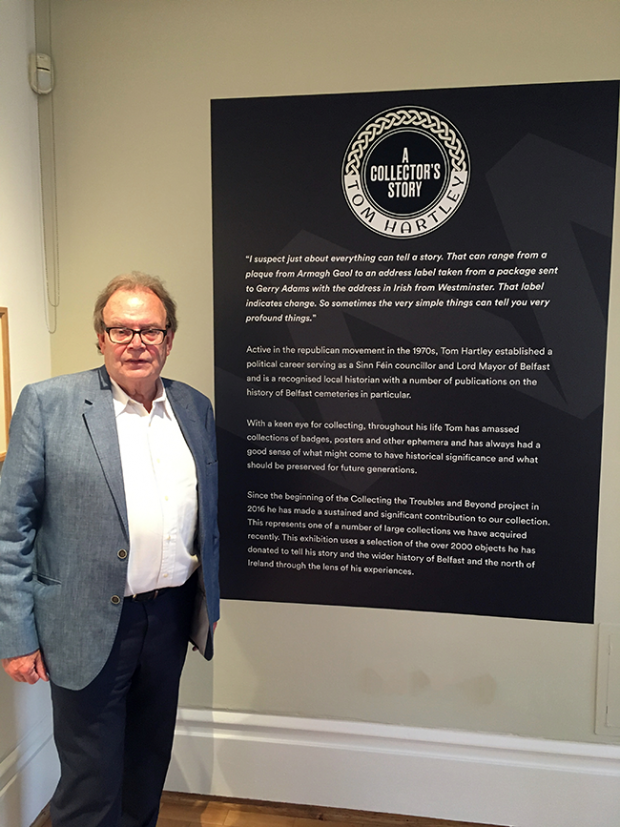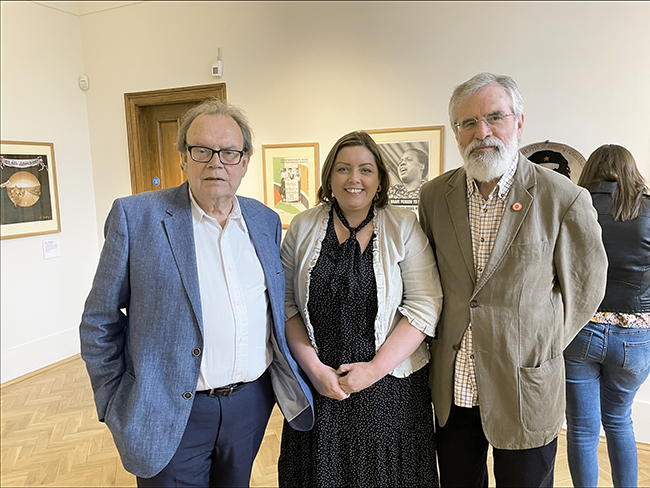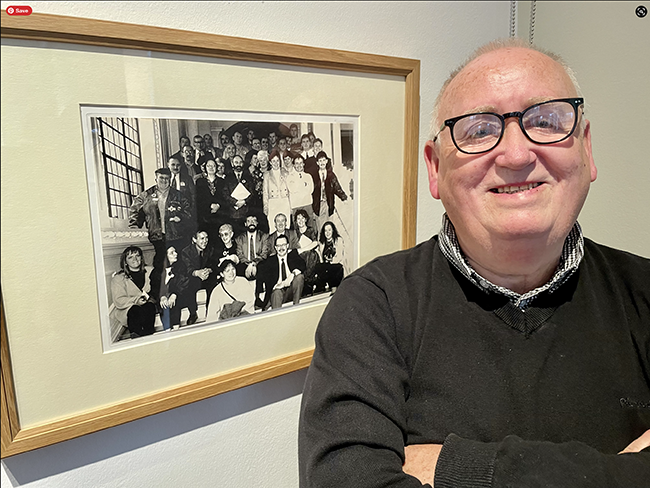4 August 2022 Edition
Protecting the narrative of change
A Collector’s Story

• The exhibition ‘A Collector’s Story’ will be on display in the Ulster Museum’s Belfast Room until January 2023
The political upheaval inside the Northern State which began in the late 1960s led to an explosion of creative and artistic energy in the nationalist community. It triggered the creation of local radio stations and the production of posters, leaflets, and local news-sheets.
These early posters, leaflets, and local newssheets were first etched out or printed on to a stencil and then attached to an old Gestetner printing machine. Within two to three years, a weekly community newspaper, the Andersonstown News, and the weekly Republicans News were carrying details of the political crisis unfolding within the Northern State.
These local publications were quickly adopted as the voice of opposition to the dominant political narrative of the media and political elites. These platforms of local communication quickly developed as an essential site of struggle and change. This was also the period when I began to collect the ephemera produced as a result of the ongoing conflict. It remains a significant part of my political activism
The Public Record Office in Belfast was the first recipient of ephemera collected by me. I also began a long association with the Linen Hall Library in Belfast, contributing a collection of approximately four thousand pamphlets and hundreds of posters.
In 2001, I started to collect for the Ulster Museum. Presently, I have donated over 2,000 objects, representing a broad political and social spectrum of political and social ideas. Now named the Tom Hartley Collection; posters of all sizes, banners, leaflets, badges, pamphlets, mugs, maps, prison crafts, republican Christmas stamps, GAA jerseys, political jerseys, loyalist and unionist badges, and a lot more beside are now part of the collection.
On 15 June this year, the museum launched an exhibition titled ‘A Collector’s Story’, which showcases a selection of objects from the Tom Hartley Collection. In a short address on the night of the launch, I emphasised the importance of providing future historians with the ephemera of the political and social struggles that constitute the multiple narratives of change from the 1960s through to the present. I argued that to fail in this was to allow others to hijack, distort or silence those voices of change.
I related that sentiment to the exhibition itself. The exhibits engage us through their demands for marriage equality, national rights, prisoners’ rights, Irish language rights, and the rights of families to have the truth.

• Tom Hartley with Deirdre Hargey and Gerry Adams
The painter Robert Ballagh is well represented through his thought provoking prints; ‘The Thirtieth of January’, ‘Martin McGuiness’, and ‘Slán Abhaile’. There is also a small representative collection of pamphlets and political badges. The exhibition includes objects from the Unionist community, which remind us of the complexity of our island narrative.
While an exhibit invites us to engage with an awareness of its form and design, it can also reveal the intellectual process or journey that turns a political idea into an object. For example, one of the exhibits is a Sinn Féin poster demanding marriage equality.
This campaign poster began with an awareness of an injustice, which became a focus for group activity to highlight and oppose the injustice. Through forms of communication, ideas led to proposals to end the injustice, the poster being one of those proposals.
In this process, we see group purpose, action, creativity, and energy. Multiply this by the number of objects on display and, over the timeframe of years, a picture of a highly creative and politicised human process emerges, which shaped the political and social space it occupied.
Another example of this process is to be found in a recently acquired crocodile suit which was worn by Irish language activists in a protest held outside the office of the DUP’s Nelson McCausland on 7 February 2017.
The protest occurred in the wake of the outrageous response of Arlene Foster, then leader of the DUP, to the demand for an Irish Language Act, Foster stated, “If you feed a crocodile, it will keep coming back and looking for more”.
Those wearing the suit at the protest on 7 February exposed the reactionary nature of Arlene Foster’s attitude to the demand for an Irish Language Act. Again, in the 2019 Assembly Elections, Irish language activists highlighted this crocodile moment and its deep political impact across the nationalist community by simply wearing a crocodile suit.
Of course, all of us accumulate objects and, through them, we build a reservoir of memory and experience. Memory is not static consciousness; it grows, matures, changes and is reshaped by new experiences. Much can be forgotten and hidden in the depth of our unconscious.

• Fra McCann beside one of the many exhibits
Therein lies the secret of an exhibition; it is a key that opens a door to these hidden memories. For those who remember the exhibit as a part of their life experience, between object on display and encountering the object, significant moments of debate, change, political activity, and collective energy are revisited and brought to the surface, to be lodged in our individual and collective memory bank.
Memories have the potential to be collected and recorded and add to depth of understanding for future generations. This memory bank can become the starting point and a powerful stimulus for conversation and debate, releasing memories long forgotten and associated with particular periods of life’s journey and the individuals who occupied that particular space in time. An important dimension of any public display of museum exhibits is how it allows for multiple and antagonistic opinions to emerge, thus allowing a critical analysis of the exhibition which stimulates a broader interpretation of the objects on display.
I sincerely hope that those who view the exhibits for the first time become curious about the context of their use, seeking to understand how they emerged and through their imagination begin to place the exhibits within an historical setting. It could be the start of a historical journey and an exploration of the past, broadening their knowledge and understanding and triggering the need for ongoing research.
Struggle and change is often represented through the lives of big personalities and their leadership roles. What I seek to achieve is to collect the ephemera of historical events which allows for a look at history from the viewpoint of activists and participants who embody the grassroots and backbone of political and social movements.
The more we hear their voices, the more we see them, the more we can locate their presence in the historical events they shaped in the course of their lives. To achieve this, we need to collect, collate, and conserve the material.
Material sitting in attics should not be seen as rubbish and dumped. So, if you have material which you think is of historical importance, talk to your local museum or university about your material or contact the head office of Sinn Féin who may be interested in adding your material to their archive. Whatever you do, make sure your history is preserved and valued.
The exhibition ‘A Collector’s Story’ will be on display in the Ulster Museum’s Belfast Room until January 2023
• Tom Hartley is an author, historian, and former Belfast Sinn Féin councillor and Mayor




